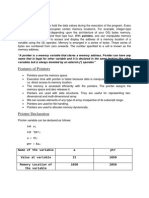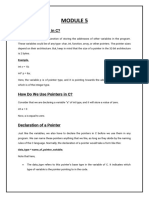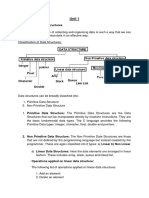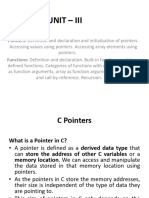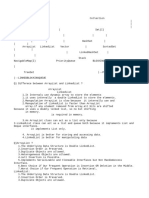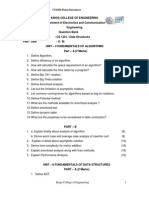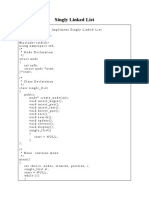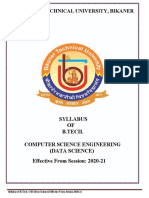0% found this document useful (0 votes)
184 views10 pagesC Pointers
The document discusses pointers in C. It explains that pointers store the memory address of other variables and allow access to dynamic memory and other functionality. It then describes pointer syntax and declaration, initialization, dereferencing, types of pointers like integer, array, structure, function pointers. It also discusses linked lists which use pointers to connect nodes in a non-contiguous manner.
Uploaded by
shivaniCopyright
© © All Rights Reserved
We take content rights seriously. If you suspect this is your content, claim it here.
Available Formats
Download as PDF, TXT or read online on Scribd
0% found this document useful (0 votes)
184 views10 pagesC Pointers
The document discusses pointers in C. It explains that pointers store the memory address of other variables and allow access to dynamic memory and other functionality. It then describes pointer syntax and declaration, initialization, dereferencing, types of pointers like integer, array, structure, function pointers. It also discusses linked lists which use pointers to connect nodes in a non-contiguous manner.
Uploaded by
shivaniCopyright
© © All Rights Reserved
We take content rights seriously. If you suspect this is your content, claim it here.
Available Formats
Download as PDF, TXT or read online on Scribd
/ 10


























